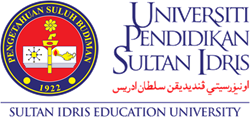Assessing remote learning's feasibility: A comprehensive analysis of Philippine public-school teachers’ use of learning management systems and blended learning approaches
DOI:
https://doi.org/10.37134/jrpptte.vol14.1.3.2024Keywords:
Blended-teaching, Google Classroom, Google Apps for Education, learning management systems, technologyAbstract
This study examines the ever-changing environment of blended learning, with a special emphasis on how teachers in public schools in the Philippines use Google Classroom in the shifting educational landscape. Based on a mix of academic views and practical research, the study seeks to improve our understanding of the difficulties and possibilities related to blended learning. The conceptual framework, derived from Graham et al.'s blended teaching matrix, classifies interactions into four quadrants, offering a complete structure for comprehending blended learning situations. The study aims to identify the blended teaching approaches used by instructors, evaluate the utilization of Google Classroom features and Google Apps for Education, and ascertain the frequency and dependence of Google Classroom as a key teaching tool. Data was gathered from 123 public-school teachers at the Schools Division Office of Isabela through a systematic survey. The results demonstrate a prevalent use of Google Classroom features, highlighting its significance in facilitating the transmission of lessons, communication between students, distribution of assignments, and improvement of learning activities. An examination of the features of Google Classroom, Google Apps for Education, and Google Docs file templates reveals a wide range of use patterns among instructors, ranging from seldom to regular utilization. Teachers demonstrate favorable attitudes towards the adaptability and compatibility of Google Classroom, emphasizing its seamless connection with portable devices. Challenges arise from the sporadic Wi-Fi connections, which have a negative influence on the quality of blended learning. The research suggests implementing customized professional development program for teachers and highlights the need to include adaptive technological frameworks in curriculum design. This study provides essential knowledge on the implementation of blended learning methods by public school teachers. It gives suggestions for policymaking, curriculum design, and teacher training in response to the ever-changing educational environment.
Downloads
References
Clunie, L., Morris, N. P., Joynes, V., & Pickering, J. D. (2017). How comprehensive are research studies investigating the efficacy of technology‐enhanced learning resources in anatomy education? a systematic review. Anatomical Sciences Education, 11(3), 303-319. https://doi.org/10.1002/ase.1762
Cooper, L. F. (2019). Digital technology: impact and opportunities in dental education. Journal of Dental Education, 83(4), 379-380. https://doi.org/10.21815/jde.019.042
Graham, C. R., Borup, J., Pulham, E., & Larsen, R. (2017). K-12 blended teaching readiness: Phase 1 Instrument Development [Research report]. Michigan Virtual Learning Research Institute. https://michiganvirtual.org/wp-content/uploads/2017/11/k12-blended-teaching-readiness-phase-1-instrument-development.pdf
Hayati, N., Muthmainah, M., & Wulandari, R. (2022). Children’s online cognitive learning through integrated technology and hybrid learning. JPUD - Jurnal Pendidikan Usia Dini, 16(1), 116-132. https://doi.org/10.21009/jpud.161.08
König, J., Jäger-Biela, D., & Glutsch, N. (2020). Adapting to online teaching during covid-19 school closure: teacher education and teacher competence effects among early career teachers in germany. European Journal of Teacher Education, 43(4), 608-622. https://doi.org/10.1080/02619768.2020.1809650
Li, Q. and Ma, X. (2010). A meta-analysis of the effects of computer technology on school students’ mathematics learning. Educational Psychology Review, 22(3), 215-243. https://doi.org/10.1007/s10648-010-9125-8
McInerney, J. and Druva, R. (2019). Clinical educators’ attitudes towards the use of technology in the clinical teaching environment. a mixed methods study. Journal of Medical Radiation Sciences, 66(2), 72-80. https://doi.org/10.1002/jmrs.335
O’Connor, S. and Andrews, T. (2015). Mobile technology and its use in clinical nursing education: a literature review. Journal of Nursing Education, 54(3), 137-144. https://doi.org/10.3928/01484834-20150218-01
Romero, C. and Ventura, S. (2020). Educational data mining and learning analytics: an updated survey. WIREs Data Mining and Knowledge Discovery, 10(3). https://doi.org/10.1002/widm.1355
Tuma, F. (2021). The use of educational technology for interactive teaching in lectures. Annals of Medicine and Surgery, 62, 231-235. https://doi.org/10.1016/j.amsu.2021.01.051
Voogt, J., Erstad, O., Dede, C., & Mishra, P. (2013). Challenges to learning and schooling in the digital networked world of the 21st century. Journal of Computer Assisted Learning, 29(5), 403-413. https://doi.org/10.1111/jcal.12029
Downloads
Published
How to Cite
Issue
Section
License
Copyright (c) 2024 Mark Jhon Prestoza

This work is licensed under a Creative Commons Attribution-NonCommercial-ShareAlike 4.0 International License.




